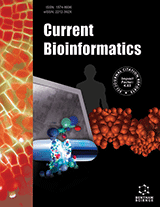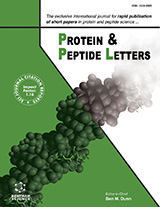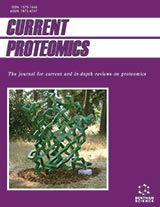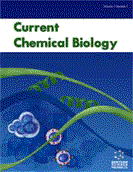Abstract
Over the past few years, research in phosphoproteomic has assisted a tremendous revolution thanks to instrumental technologies advances in mass spectrometry combined with innovative experimental strategies. This has allowed the identification of thousands of high confidence phosphosites. Presently, almost 60000 non-redundant phosphosites have been identified from ∼10000 non-redundant proteins and about 80% of these phosphosites have been identified from high throughput experiments in the last six years. The vast majority of phosphosites are still functionally uncharacterized and the kinases responsible of their generation are almost unknown. Several computational approaches have been developed to link kinase families with putative substrates and although these are powerful tools, they are not commonly used. Here we discuss about the present approaches and tools developed for predicting the functional link between the kinases and their substrates.
Keywords: Phosphosites, kinase, predictive programs, consensus sequence
Current Bioinformatics
Title: Matching up Phosphosites to Kinases: A Survey of Available Predictive Programs
Volume: 5 Issue: 2
Author(s): Stefano Toppo, Lorenzo A. Pinna and Mauro Salvi
Affiliation:
Keywords: Phosphosites, kinase, predictive programs, consensus sequence
Abstract: Over the past few years, research in phosphoproteomic has assisted a tremendous revolution thanks to instrumental technologies advances in mass spectrometry combined with innovative experimental strategies. This has allowed the identification of thousands of high confidence phosphosites. Presently, almost 60000 non-redundant phosphosites have been identified from ∼10000 non-redundant proteins and about 80% of these phosphosites have been identified from high throughput experiments in the last six years. The vast majority of phosphosites are still functionally uncharacterized and the kinases responsible of their generation are almost unknown. Several computational approaches have been developed to link kinase families with putative substrates and although these are powerful tools, they are not commonly used. Here we discuss about the present approaches and tools developed for predicting the functional link between the kinases and their substrates.
Export Options
About this article
Cite this article as:
Toppo Stefano, A. Pinna Lorenzo and Salvi Mauro, Matching up Phosphosites to Kinases: A Survey of Available Predictive Programs, Current Bioinformatics 2010; 5 (2) . https://dx.doi.org/10.2174/157489310791268432
| DOI https://dx.doi.org/10.2174/157489310791268432 |
Print ISSN 1574-8936 |
| Publisher Name Bentham Science Publisher |
Online ISSN 2212-392X |
 10
10
- Author Guidelines
- Bentham Author Support Services (BASS)
- Graphical Abstracts
- Fabricating and Stating False Information
- Research Misconduct
- Post Publication Discussions and Corrections
- Publishing Ethics and Rectitude
- Increase Visibility of Your Article
- Archiving Policies
- Peer Review Workflow
- Order Your Article Before Print
- Promote Your Article
- Manuscript Transfer Facility
- Editorial Policies
- Allegations from Whistleblowers
Related Articles
-
Patent Selections:
Recent Patents on Biotechnology Sleep and COPD
Current Respiratory Medicine Reviews Febrile Neutropenia in Children with Cancer: Approach to Diagnosis and Treatment
Current Pediatric Reviews Genetics of Serotonin Receptors and Depression: State of the Art
Current Drug Targets Editorial (Thematic Issue: Therapeutic Applications of Advanced Drug Delivery Systems)
Current Pharmaceutical Design Novel Bronic Acid-Based Fluorescent Sensor for Sugars and Nucleosides
Current Organic Synthesis Biodistribution and Safety Assessment of Bladder Cancer Specific Recombinant Oncolytic Adenovirus in Subcutaneous Xenografts Tumor Model in Nude Mice
Current Gene Therapy The Proteasome in Health and Disease
Current Pharmaceutical Design Hydrogen Sulphide: Biopharmacological Roles in the Cardiovascular System and Pharmaceutical Perspectives
Current Medicinal Chemistry Targeted Drug Delivery in Brain Tumors-nanochemistry Applications and Advances
Current Topics in Medicinal Chemistry An Update on Natural Occurrence and Biological Activity of Chromones
Current Medicinal Chemistry Targeting IL-17 and IL-23 in Immune Mediated Renal Disease
Current Medicinal Chemistry Nanoparticle Therapy for Allergic and Inflammatory Disease
Anti-Inflammatory & Anti-Allergy Agents in Medicinal Chemistry Toxicity of Biodegradable Nanoscale Preparations
Current Drug Metabolism Metabolomics and Its Practical Value in Pharmaceutical Industry
Current Drug Metabolism Carcinogenesis and Therapeutic Strategies in Thyroid Cancer
Current Drug Targets Potential Beneficial Effects of Garlic in Oncohematology
Mini-Reviews in Medicinal Chemistry Development of Scaffolds for Vascular Tissue Engineering: Biomaterial Mediated Neovascularization
Current Stem Cell Research & Therapy Behcets Syndrome: Literature Review
Current Rheumatology Reviews Anionic Linear Globular Dendrimer-G2-Ciprofloxacin Nano-Conjugate: Novel Agent against Wilson Disease Cell Model
Letters in Drug Design & Discovery

















.jpeg)








